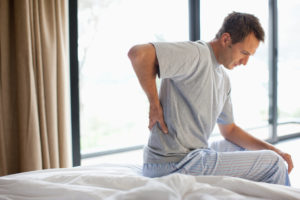
The Straw that Broke the Camel’s Back
Osteoarthritis of the spine does not seem to result from any singular factor. In most cases, there is a combination of two or more conditions. Examples include:
- Osteoarthritis is more likely to occur as we age because we have less synovial fluid to lubricate the joints of the body.
- Excess weight stresses the joints, making it more difficult for them to function properly.
- Family history. It is possible that a history of osteoarthritis within your family could increase your personal risk.
- Post-menopausal women are more commonly affected by osteoarthritis than younger women.
- Osteoarthritis is more common in men under the age of forty-five than older men.
How do you know?
Osteoarthritis of the spine can be treated without surgery when symptoms are detected early. Identifying risks is one step. Taking action to reduce them is another step. Then, recognizing clues that the joints in your back could be under stress is another important matter. Symptoms to look for include:
- Pain that wakes you up or feels worse upon waking, then better as your body becomes more active.
- Tenderness when an affected joint is pressed on.
- Stiffness in the low back or neck.
- Noticeable joint swelling or a sensation of swelling that becomes more intense with weather changes.
- A tingling, numb, or pinching sensation over the affected joint.
- Chronic achiness of the low back or neck, or radiating pain from the affected area.
There are other spinal conditions that could be responsible for such symptoms. Each needs its own form of therapy for improvement. The bottom line on back or neck pain is that it needs to be checked out if it lingers for more than two weeks. The sooner that back pain is assessed, the greater the likelihood of non-surgical treatment.
Dr. Albert is an experienced, reputable spinal surgeon with a conveniently located NYC office. To schedule a visit with us, call 212-606-1004.

